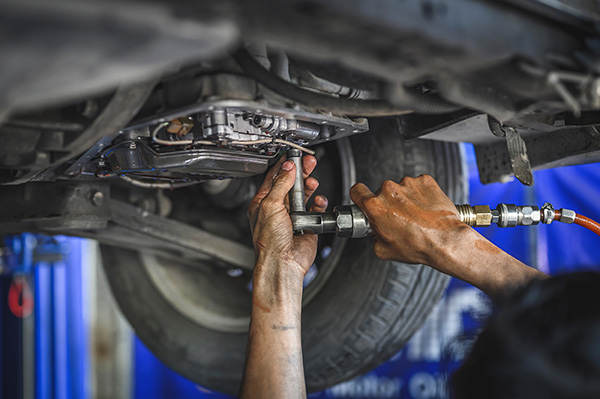
Have you ever wondered when you should change your transmission fluid? It's a common question that many car owners grapple with. The transmission is one of the most critical components of your vehicle, ensuring that power from the engine is effectively transferred to the wheels. However, proper maintenance is required to function optimally. Ignoring the state of your transmission fluid can lead to serious issues down the line. These are the signs and guidelines for changing your transmission fluid to keep your car running.
Why Transmission Fluid Matters
Transmission fluid lubricates the moving parts, cools the transmission, and helps ensure smooth gear shifts. Over time, however, this fluid can degrade due to heat, friction, and contamination from metal particles. As the fluid deteriorates, it loses its ability to perform these critical functions, leading to potential transmission damage and a decrease in your car's overall performance. Regularly checking and changing your transmission fluid can prevent these issues and extend the life of your transmission.
Signs It's Time to Change Your Transmission Fluid
So, how do you know when it's time to change your transmission fluid? There are several signs to look out for:
Slipping Gears
If your car is slipping out of gear or experiencing difficulty staying in gear, it could be a sign that your transmission fluid is low or dirty. Slipping gears can lead to a lack of power and control, making driving dangerous.
Unusual Noises
Strange noises such as grinding, whining, or clunking when your car shifts gears are often indicators of transmission problems. These sounds can result from worn-out transmission fluid that's not providing adequate lubrication.
Delayed Shifting
If you notice a delay when your car shifts gears, especially from neutral to drive or reverse, your transmission fluid might be to blame. This delay can indicate that the fluid is old and has lost its effectiveness.
Transmission Overheating
Overheating is a common issue when the transmission fluid is low or dirty. Overheating can cause significant damage to the transmission components, leading to costly repairs.
Fluid Leaks
If you notice red or brown puddles under your car, it could be a transmission fluid leak. Leaks reduce the fluid level, leading to inadequate lubrication and cooling.
Manufacturer Recommendations
Consulting your vehicle's owner manual is the best way to determine the recommended interval for changing your transmission fluid. Most manufacturers suggest changing the transmission fluid every 30,000 to 60,000 miles. However, this can vary based on your driving conditions and habits. For example, if you frequently drive in heavy traffic, tow heavy loads, or operate your vehicle in extreme temperatures, you might need to change the fluid more often. Following the manufacturer's guidelines ensures that your transmission stays in good condition and performs efficiently.
The Fluid Change Process
- Drain the Old Fluid: Start by draining the old transmission fluid from the transmission pan. This step involves removing the drain plug and allowing the fluid to completely drain out.
- Replace the Filter: Many vehicles have a transmission filter that should be replaced along with the fluid. The filter helps to remove contaminants and keep the fluid clean.
- Clean the Pan: Once the fluid is drained, clean the transmission pan and remove any metal particles or debris that have accumulated.
- Refill with New Fluid: After replacing the drain plug and filter, refill the transmission with the appropriate type and amount of new transmission fluid.
- Check for Leaks: After completing the fluid change, check for any leaks to ensure everything is properly sealed.
Professional vs. DIY
While some car enthusiasts may prefer to change their transmission fluid themselves, many drivers opt for professional service. A professional technician handling the fluid change ensures it's done correctly and safely. A professional can also inspect the transmission for any potential issues and provide valuable maintenance tips. If you're not comfortable with at-home car maintenance, it's best to leave this task to the experts.
Don't wait for transmission problems to escalate. Visit Bud's Auto Repair & Transmission for a professional fluid change and inspection of the transmission.